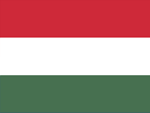 Hungarian Learning Games
Hungarian Learning Games
Learning Hungarian offers a fascinating dive into one of Europe's most distinctive and complex languages. Spoken by about 13 million people, Hungarian boasts a unique structure and rich phonetic system that sets it apart from its Indo-European neighbors. As a member of the Finno-Ugric language family, it shares distant roots with Finnish and Estonian, standing as a linguistic island in a sea of predominantly Germanic, Romance, and Slavic tongues. For beginners, embarking on the Hungarian language journey is not just about mastering its intricate grammar and extensive vocabulary; it's about connecting with Hungary's vibrant culture, storied history, and the poetic soul of its people.
Hungarian's complexity and beauty lie in its agglutinative nature, where words are formed with a series of affixes, each carrying significant meaning. This structure creates a plethora of word forms and an expressive, nuanced way of communication that reflects the Hungarian spirit. Its vocabulary is a treasure trove of history, carrying influences from ancient tribes, neighboring nations, and historical conquests. For learners, Hungarian presents an alluring challenge; it's about discovering a language that doesn't conform to the familiar patterns of most European languages but instead offers a gateway to thinking and expressing in profoundly different ways. Engaging with Hungarian is not just learning a language; it's an adventure into understanding the human capacity for linguistic diversity and the rich tapestry of cultural identity.
 Weekdays in Hungarian
Weekdays in Hungarian Vegetables in Hungarian
Vegetables in Hungarian Months in Hungarian
Months in Hungarian Fruits in Hungarian
Fruits in Hungarian Colors in Hungarian
Colors in Hungarian Animals in Hungarian
Animals in Hungarian Numbers 11-20 in Hungarian
Numbers 11-20 in Hungarian Numbers 1-10 in Hungarian
Numbers 1-10 in Hungarian